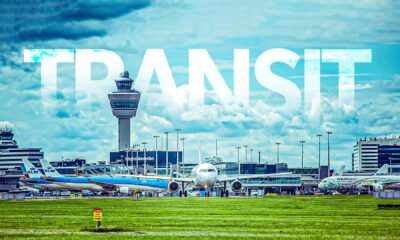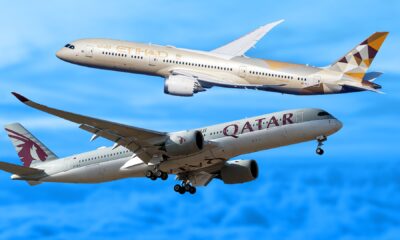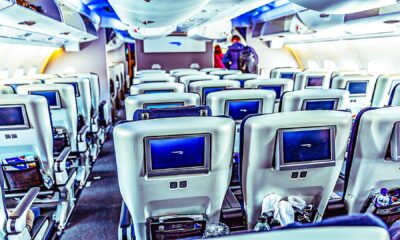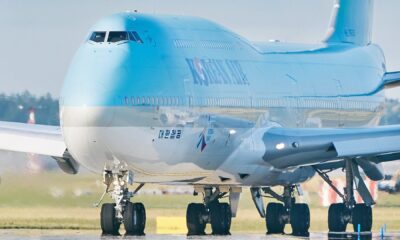World
Airbus A380: Exploring the World’s Largest Passenger Aircraft
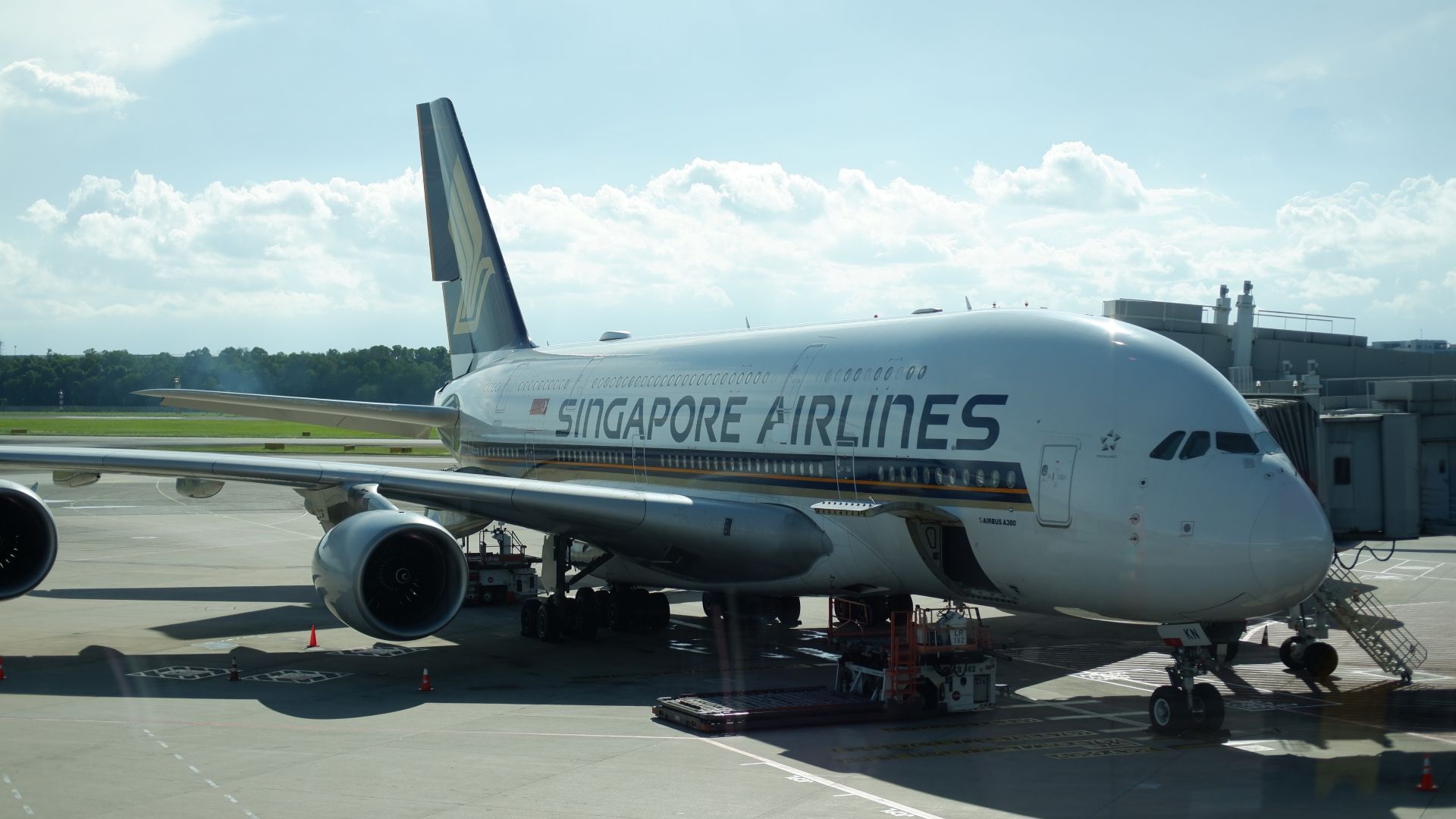
When the Airbus A380 made its debut in 2005, it transformed the landscape of long-haul air travel. As the world’s first full-length double-deck passenger aircraft, the A380 was designed to accommodate more passengers in greater comfort than any previous airliner. Its impressive size and advanced engineering captured global attention, positioning the A380 as a pioneering solution to the challenges of airport congestion and rising travel demand.
The Airbus A380-800 stands out markedly in the aviation world. With a length of 72.72 meters and a wingspan of 79.75 meters, it surpasses the Boeing 747-400, which previously held sway over long-haul routes. Airlines can configure the A380 to house over 500 seats in standard layouts, with the potential to fit up to 850 seats in an all-economy arrangement. Airbus marketed the A380 as a means to alleviate congestion at busy airports like London Heathrow, where limited takeoff and landing slots necessitate maximizing passenger capacity per flight.
While the A380 program faced challenges, a handful of airlines continue to operate the aircraft effectively. Emirates stands out as the most notable operator, while British Airways and Qantas are also finding success with the type. Qantas has plans to keep the A380 in its fleet until the 2030s, and several airlines have recently returned the aircraft to service following the impact of the COVID-19 pandemic.
The A380 Cockpit: A Pilot’s Perspective
Airbus dedicated significant attention to the cockpit design, ensuring that it met the needs of pilots as much as it did the comfort of passengers. The A380’s flight deck reflects decades of innovation, incorporating familiar elements for pilots transitioning from other Airbus models. With larger displays and advanced systems, the A380 cockpit includes ten screens that facilitate comprehensive flight management.
The integration of digital fly-by-wire technology and a “dark cockpit” philosophy enhances operational efficiency. Notably, the A380’s cockpit features an “Onboard Information System” acting as an integrated Electronic Flight Bag, equipped with tools designed for the demands of handling the largest passenger aircraft in the world.
Inside the A380: Passenger Experience
The Airbus A380’s interior is as impressive as its exterior, boasting the widest cabin ever designed for a commercial airliner, measuring 6.58 meters across. The spaciousness allows airlines to configure economy class seating in a 3-4-3 arrangement, which is among the most comfortable layouts available today. The aircraft’s height contributes to a less claustrophobic atmosphere, making it a preferred choice for long-haul travel.
Airbus introduced unique cabin features, offering airlines the option of traditional “shelf-style” overhead bins or modern “pivot-type” bins, enhancing storage capacity and passenger convenience. The A380’s lower noise levels, attributed to advanced insulation and the distance between the engines and the cabin, create a more relaxed environment for travelers.
The upper deck of the A380 is particularly noteworthy. Stretching from nose to tail, it provides airlines with the flexibility to create premium cabin layouts. Many airlines choose to place business class seats on the upper deck, maximizing space efficiency. For instance, Emirates configures its A380s with 76 business class seats, while British Airways operates 97 Club World seats across both decks.
Creative use of space is a hallmark of the A380’s design. Airlines have taken advantage of the aircraft’s dimensions to incorporate unique amenities. Emirates, for example, features an upper-deck bar and lounge, offering premium passengers a social space to relax during flights. Other airlines, such as Qantas and Etihad Airways, have similarly introduced lounges, enhancing the overall travel experience.
Despite its success in passenger comfort, the A380 faces limitations in cargo capacity. While it excels in passenger transport, its design compromises cargo space. The A380’s cargo hold is relatively small, limiting its ability to carry significant freight compared to other aircraft like the Boeing 777-300ER or the Boeing 747-8. This aspect has affected its profitability on certain routes, particularly those with high cargo demand.
The Airbus A380 remains a remarkable feat of engineering and design. While its future may be uncertain, its impact on the aviation industry is undeniable. The A380 redefined air travel, setting new standards for passenger comfort and experience, and continues to capture the imagination of travelers and aviation enthusiasts alike.
-

 Entertainment3 months ago
Entertainment3 months agoAnn Ming Reflects on ITV’s ‘I Fought the Law’ Drama
-

 Entertainment4 months ago
Entertainment4 months agoKate Garraway Sells £2 Million Home Amid Financial Struggles
-

 Health3 months ago
Health3 months agoKatie Price Faces New Health Concerns After Cancer Symptoms Resurface
-

 Entertainment3 months ago
Entertainment3 months agoCoronation Street’s Carl Webster Faces Trouble with New Affairs
-

 Entertainment3 months ago
Entertainment3 months agoWhere is Tinder Swindler Simon Leviev? Latest Updates Revealed
-

 World2 weeks ago
World2 weeks agoBailey Announces Heartbreaking Split from Rebecca After Reunion
-

 Entertainment4 months ago
Entertainment4 months agoMarkiplier Addresses AI Controversy During Livestream Response
-

 Entertainment2 weeks ago
Entertainment2 weeks agoCoronation Street Fans React as Todd Faces Heartbreaking Choice
-

 Science1 month ago
Science1 month agoBrian Cox Addresses Claims of Alien Probe in 3I/ATLAS Discovery
-

 Health4 months ago
Health4 months agoCarol Vorderman Reflects on Health Scare and Family Support
-

 Entertainment4 months ago
Entertainment4 months agoKim Cattrall Posts Cryptic Message After HBO’s Sequel Cancellation
-

 Entertainment3 months ago
Entertainment3 months agoOlivia Attwood Opens Up About Fallout with Former Best Friend

